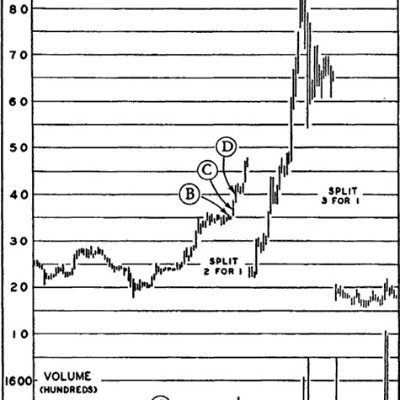I love this sharing, I totally relate to this. If you're precise and efficient with your entries—ensuring entries are always below 50/60% from the LoD stop based on ATR nature of the securities volatility—then taking a 0.15% risk to your net liquidation value can easily scale up to 15-20% position size. Sometimes, I’ve gone even as high as 30% with a 0.15% risk; that happened with trades in $KOLD and $UCO earlier this year. The downside of designing trades with a tight stop loss is that you might hit your stop way more frequently than with a fixed %-based stop, especially during intraday. However, when it comes to the period that you rightly aligned your positions with the market's key turning points, you're setting yourself up for a few trades that can significantly pay off. These successful trades can quickly offset a prolonged drawdown, turning your performance positive and even making your year. You can be profitable even at 28% win rate on such circumstance because your profit factor for such traders are extremely high (as much as 4x 5x on average month, providing you scale down losses even before they hit the predetermined stop.) By the rule of the thumb, a low win rate but high profit factor strategy has way more lucrative potential to exploit further possibility and potential for equity growth because of its mathematical robustness. Try running a free Monte Carlo simulations for risk of ruin, and you will know what i mean. It's important to remember that the beauty of this represents just a <0.15% risk to your equity per opportunity. At the end of the day, you have control over your decisions, so any potential or unexpected drawdown can be kept in check if you know when to ease off when the market is already running hot. An edge in trading only comes to life when the person executing the strategy can make sound and pragmatic discretionary decisions.
I love this sharing, I totally relate to this. If you're precise and efficient with your entries—ensuring entries are always below 50/60% from the LoD stop based on ATR nature of the securities volatility—then taking a 0.15% risk to your net liquidation value can easily scale up to 15-20% position size. Sometimes, I’ve gone even as high as 30% with a 0.15% risk; that happened with trades in $KOLD and $UCO earlier this year. The downside of designing trades with a tight stop loss is that you might hit your stop way more frequently than with a fixed %-based stop, especially during intraday. However, when it comes to the period that you rightly aligned your positions with the market's key turning points, you're setting yourself up for a few trades that can significantly pay off. These successful trades can quickly offset a prolonged drawdown, turning your performance positive and even making your year. You can be profitable even at 28% win rate on such circumstance because your profit factor for such traders are extremely high (as much as 4x 5x on average month, providing you scale down losses even before they hit the predetermined stop.) By the rule of the thumb, a low win rate but high profit factor strategy has way more lucrative potential to exploit further possibility and potential for equity growth because of its mathematical robustness. Try running a free Monte Carlo simulations for risk of ruin, and you will know what i mean. It's important to remember that the beauty of this represents just a <0.15% risk to your equity per opportunity. At the end of the day, you have control over your decisions, so any potential or unexpected drawdown can be kept in check if you know when to ease off when the market is already running hot. An edge in trading only comes to life when the person executing the strategy can make sound and pragmatic discretionary decisions.
@jfsrevg Hi Jeff, how can you take a 0.15% risk to your net liquidation value to scale up to 15-20% position size? Do you add more positions and move stop up at the same time?
@jfsrevg Jeff, can you please elaborate more on this statement “ensuring entries are always below 50/60% from the LoD stop based on ATR nature of the securities volatility”, it would be great if you provide an example
@jfsrevg If we use a $100,000 trading account as an example. The example is each trading position should be in the range of 10,000-20,000 tops. And to keep your losses tight i.e 0.3% = $300. Therefore the actual stop loss should be about 3% of a $10,000 position.
@jfsrevg "ensuring entries are always below 50/60% from the LoD stop based on ATR nature of the securities volatility" Jeff can you give and example of this?
@jfsrevg Thanks Jeff. How do you determine when to press and when to ease off? Looking at whether indices are > 5x ATR from MA? I find myself getting aggressive at the wrong time and I am laying down some rules for that.
@jfsrevg What a terrific post! 🙏 Though gap downs comes also as significant risk when doing that tight stop and large size.
@jfsrevg But what i find tricky in so tiny risks is that you really have to find the very liquid names… because the spread adds more R to your trade
@jfsrevg Is there any maximum size percentage-wise that you follow Jeff for a single position or it solely depends upon how big or small the stop is?











